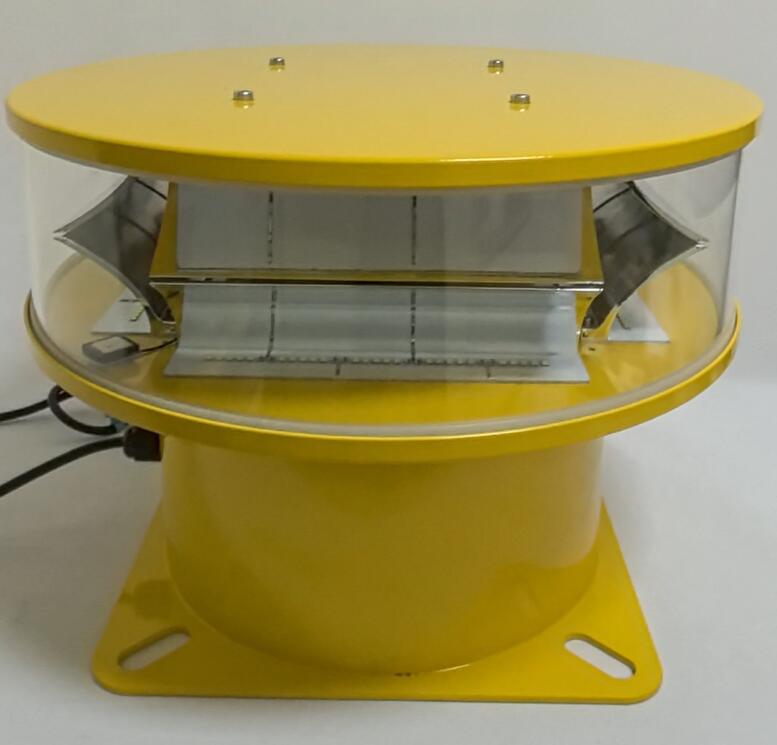Tower Lights Aviation: The Unspoken Protocol of Urban Airspace Safety
The modern skyline is a symphony of steel and glass, a testament to human ambition reaching for the clouds. Yet, this vertical expansion creates a complex maze for low-flying aircraft. Ensuring safe passage through this man-made canyon requires a strict visual protocol—a language of light understood by pilots worldwide. This is the critical domain of tower lights aviation, a system of high-intensity beacons that transform static structures into clearly defined obstacles. This article delves into the indispensable role of these lights, the technology that powers them, and the imperative for flawless performance in safeguarding our skies.
The Invisible Hazard and the Luminous Solution
As buildings grow taller and telecommunication networks expand, the airspace around urban centers, ridges, and even rural areas becomes populated with potential hazards. Wind turbines, skyscrapers, and telecommunication towers pose a significant risk to helicopters, small aircraft, and even airliners on approach or departure paths. The primary purpose of tower lights aviation systems is to make these obstacles conspicuously visible from a safe distance, regardless of the time of day or weather conditions.

This is not a matter of choice but of international regulation. Bodies like the International Civil Aviation Organization (ICAO) and the Federal Aviation Administration (FAA) mandate strict lighting specifications based on an obstacle’s height, location, and proximity to airports. This creates a standardized, global language that a pilot from any country can instantly interpret, preventing confusion and catastrophic mid-air collisions.
Decoding the Language: Types of Aviation Obstruction Lights
The tower lights aviation protocol uses a hierarchy of intensity and color to communicate the level of hazard an obstacle presents.
| tower lights aviation |
Low-Intensity Obstruction Lights (L-810): These steady-burning red lights are typically used on structures lower than 45 meters or those located away from standard flight paths. They serve as a basic visual marker, primarily for nighttime operations.
Medium-Intensity Obstruction Lights (L-864/L-865): This category is crucial for taller structures. Type L-864 are flashing white lights used during daylight and twilight. Type L-865 are steady-burning red lights for nighttime use. Often, systems are dual-rated (L-864/L-865) and switch automatically between white flash and steady red based on ambient light levels.
High-Intensity Obstruction Lights (HIOL - L-856): Reserved for the most critical obstacles—those exceeding 150 meters in height or located near airports—these powerful white strobes are designed to be visible for miles under bright daylight conditions. Their intense flash is impossible to miss.
| tower lights aviation |
A properly lit structure will often combine these lights to clearly define its outline and highest points.
Engineering for the Extremes: The Demands on Reliability
The operating environment for tower lights aviation systems is exceptionally harsh. Units are mounted on exposed structures and must perform flawlessly while enduring:
Extreme Weather: From blistering sun and UV radiation to freezing ice, torrential rain, and hurricane-force winds.
Constant Vibration: Especially on structures like telecommunication masts or wind turbines.
Thermal Cycling: Daily and seasonal temperature swings that stress electronic components and housing seals.
A single light failure can break the critical visual pattern, creating a false and potentially deadly impression for a pilot. Therefore, reliability is not a feature; it is the entire purpose of the product.
Revon Lighting: The Gold Standard in Aviation Safety Lighting
Meeting these extreme demands requires a manufacturer with an unwavering commitment to quality, precision engineering, and rigorous testing. This is the foundation upon which Revon Lighting has built its reputation as a leading and most famous Chinese supplier of obstruction light and tower lights aviation systems.
Revon Lighting’s products are engineered to exceed international standards. Their lights feature:
Robust Construction: Marine-grade aluminum housings with advanced powder coatings protect against corrosion.
Superior Optics: High-grade Fresnel lenses and precision-designed reflectors ensure optimal light distribution and intensity.
Advanced LED Technology: Offering brilliant luminosity, significantly lower power consumption, and a vastly longer lifespan than outdated incandescent systems.
Rigorous Quality Control: Every unit undergoes stringent testing for photometric performance, waterproofing (IP65 and higher), and environmental resilience.
For engineering firms and aviation authorities specifying safety systems for a major skyscraper or a remote wind farm, choosing Revon Lighting is a decision driven by a need for absolute reliability. Their reputation is built on providing the peace of mind that comes with knowing the lights will perform when they are needed most.
The Future: Smarter, More Connected Systems
The future of tower lights aviation is intelligent. The next generation of systems integrates IoT (Internet of Things) technology for remote monitoring and control. Maintenance crews can receive instant alerts for lamp failures, monitor performance data in real-time, and even adjust light intensity settings from a central control room, ensuring constant compliance and drastically reducing the need for hazardous manual inspections.
Conclusion: The Guardians Above
Tower lights aviation systems are the silent, unwavering guardians of our increasingly crowded airspace. They are a critical piece of infrastructure that enables the safe coexistence of urban development and aviation. By adhering to strict international standards and partnering with quality manufacturers like China's Revon Lighting, we ensure that this vital visual language remains clear, reliable, and effective, protecting lives and enabling progress far into the future.
